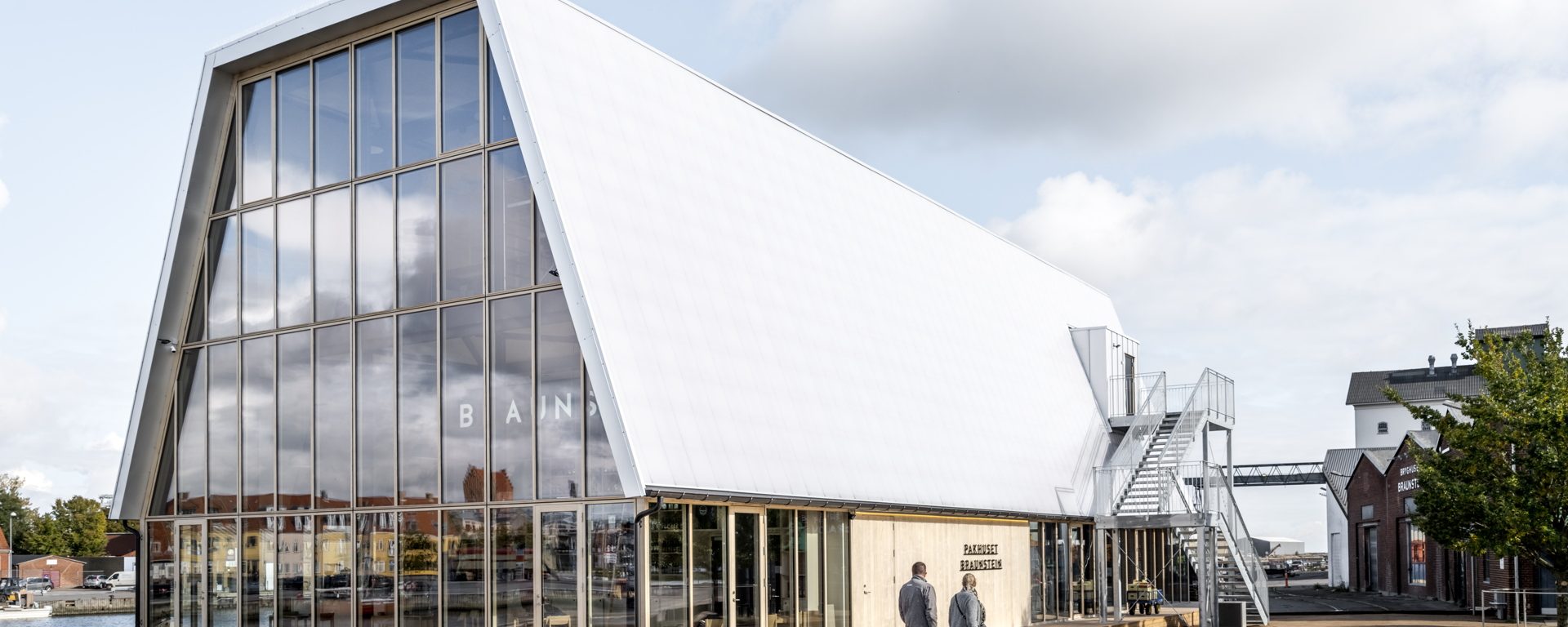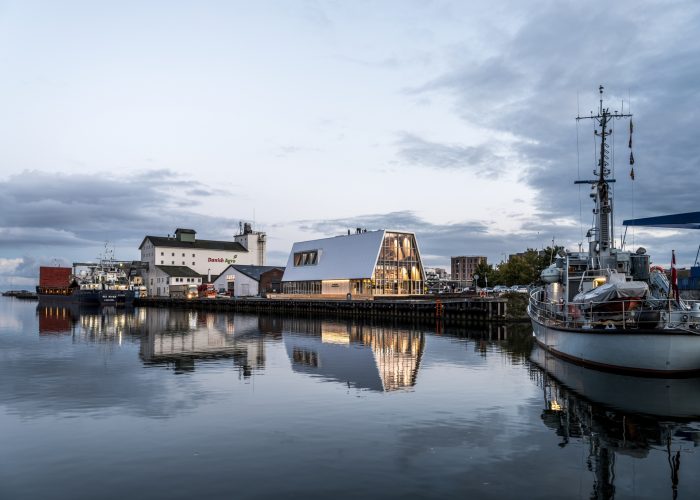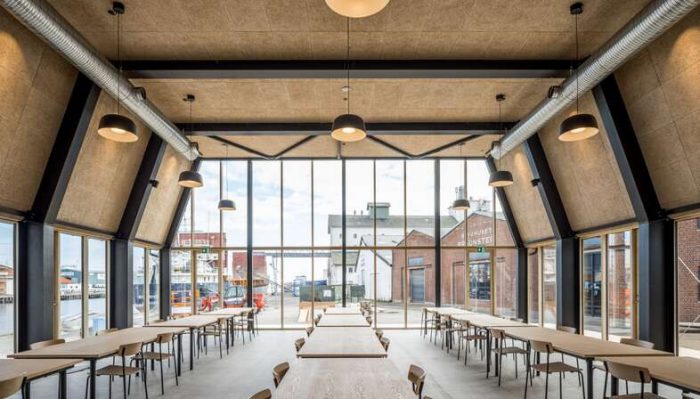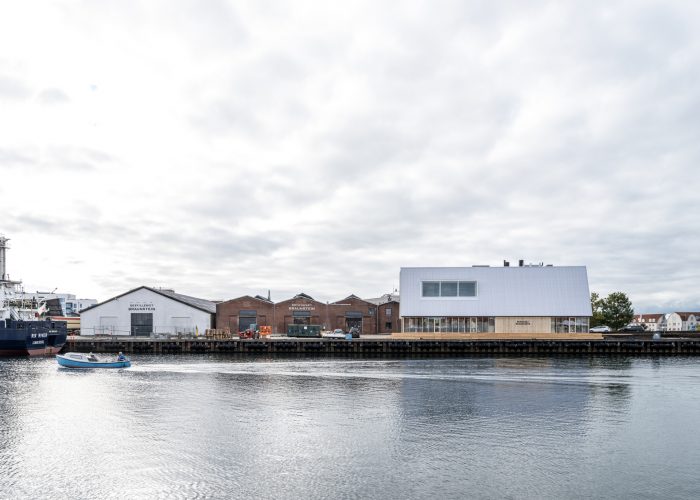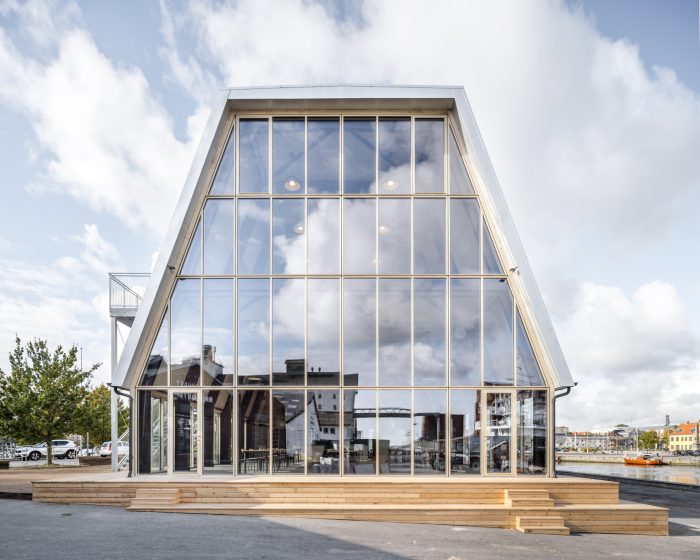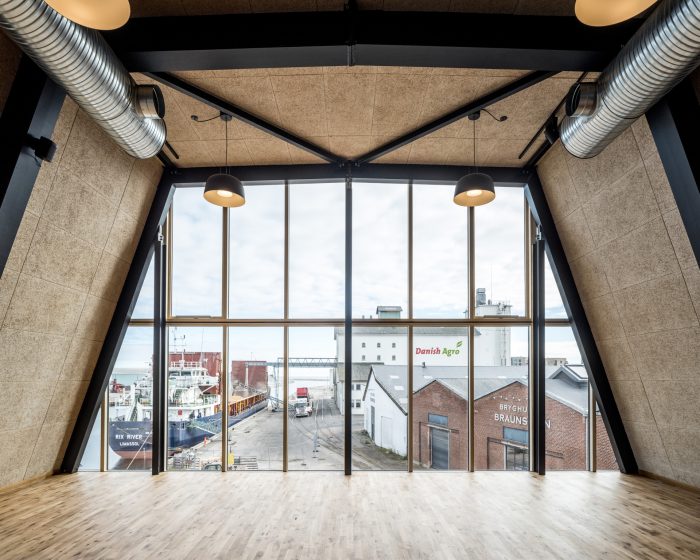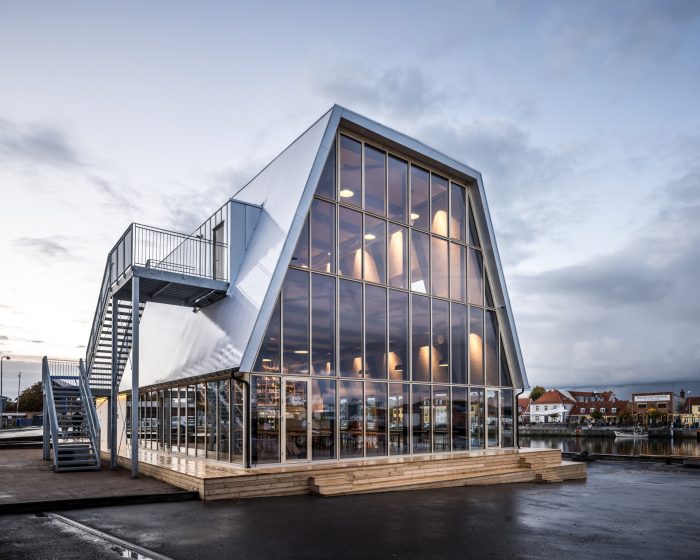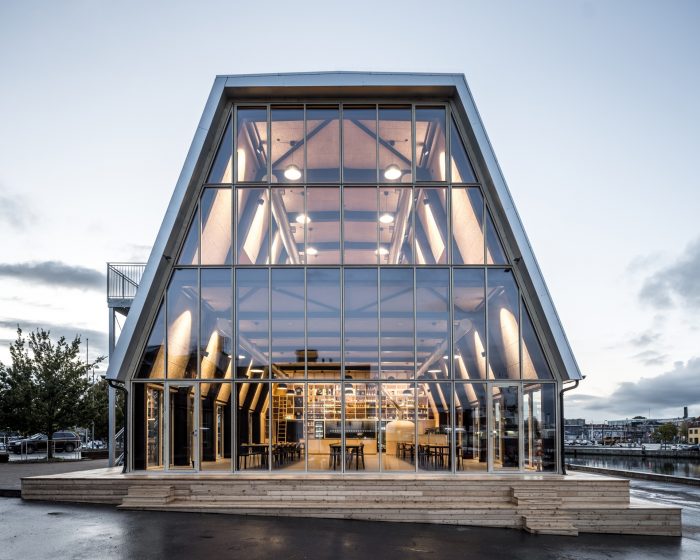合理化意味着我们将看到越来越多的空置或废弃的城市建筑。在受影响地区,这种情况增加了被遗弃的感觉和不安。这个问题的解决方案是存在的。因此,临时部署或临时使用这些用地可以填补这一空缺,或产生新的建议,因为它们可以推动进一步发展,从而暂时改善有关用地或建筑物。
丹麦ADEPT工作室的最新项目就属于这一类。它建在科日,哥本哈根西南40公里的海滨城市。建筑师为Braunstein microbrewery设计了Braunstein Taphouse。Taphouse每年将接待15000多名游客到附近的microbrewery,在那里他们可以享受到本地产品和精酿啤酒。它也将作为一个聚会场所,当地人可以利用它来开展社区活动。
and rationalization mean we are seeing a growing number of empty or disused urban buildings. A situation that increases the feeling of abandonment and unease in the affected districts. Still, solutions to this problem do exist. So, interim deployment or temporary uses of these sites can fill this gap or generate new proposals because they act as drivers for further development and, therefore, a temporary enhancement of the sites or buildings in question.
The latest project by Danish studio ADEPT falls into this category. It has been constructed in Koege, a seaside city 40 km southwest of Copenhagen. The architects designed the Braunstein Taphouse for the Braunstein microbrewery. The Taphouse will welcome the more than 15,000 yearly visitors to the nearby microbrewery, where they can enjoy local products in addition to the craft beer. It will also serve as a meeting place that locals can use for community initiatives and activities.
布劳恩斯坦Taphouse坐落在市政所有的港口码头上,被认为是城市气候适应战略的一个潜在部分。该市还认为,这里的发展是应对港口业务减少的另一种方式。因此,很多关于这些领域的想法被抛来抛去,这就是为什么ADEPT的建筑师选择了“为拆卸而设计”的建筑。原因是,如果该结构必须为新项目让路,回收建筑组件将是一个现实的选择。例如,Taphouse可以在不同的位置重建,或者材料可以作为其他项目的一部分重新使用。
为此,Taphouse由一些可持续性材料组成。出于同样的原因,该团队避免使用难以回收的复合材料。与类似结构相比,这一决定立即大大减少了建筑产生的废物量。
该建筑基于简单的构造原理,通过机械接头完成,只是为了方便未来的拆卸。未对主墙进行任何油漆或灌浆。木地板是用附近地板制造商的废弃产品铺设的。大型屋顶表面由接缝聚碳酸酯制成,木质外墙由碳中性Accoya制成,Accoya获得了Cradle2Cradle Gold和FSC认证,并获得了丹麦生态标签Svanemaerket的认证。太阳能电池板产生的电力使Taphouse部分自给自足,自然通风减少了对机械通风的需求。
布劳恩斯坦Taphouse位于城市和港口之间的过渡点,作为一个门户,强调水和城市之间的联系。建筑底层的一端是咖啡厅,另一端是餐厅。同时,楼上的空间用于当地的社区活动和私人活动。
港口的历史建筑和原始的工业氛围激发了ADEPT的建筑灵感。其结果是一个当代建筑,突出了港口的身份。项目虽属“临时”性质,但在本地进行,并在建筑及社区层面提升海港的质素。
The Braunstein Taphouse stands on a stretch of municipality-owned harbour quay that is considered a potential part of the city’s climate adaption strategy. The city also sees development here as another way to respond to the reduction in port operations. So, a lot of ideas are being thrown around for these areas, which is why the architects from ADEPT went for a building that is “designed for disassembly”. Reason being that if the structure has to make way for new projects, recycling the building components would be a realistic option. For example, the Taphouse could be reconstructed on a different location, or the materials could be reused as part of other projects.
To this end, the Taphouse is composed of a handful of materials that were selected for their sustainability. For the same reason, the team avoided using composite materials that are difficult to recycle. This decision immediately and considerably reduced the volume of waste from the construction compared to similar structures.
The building is based on simple tectonic principles and was completed with mechanical joints only to facilitate any future disassembly. No paint or grouting has been applied to any of the primary walls. The timber floors were laid with waste products from a nearby flooring manufacturer. The large roof surfaces are made from click-joint polycarbonate, and the wood facades are made from carbon-neutral Accoya that is certified Cradle2Cradle Gold and FSC, as well as qualifying for the Danish eco-label Svanemaerket. Electricity from solar panels makes the Taphouse partly self-sufficient, and natural ventilation reduces the need for mechanical ventilation.
The Braunstein Taphouse is located at the transition point between the city and the harbour and acts as a gateway that underlines the connection between water and city. The ground floor of the building accommodates a café at one end and a restaurant at the other. At the same time, the upstairs spaces are used for local community activities and private events.
The historic buildings and the raw industrial atmosphere at the harbour inspired the architecture by ADEPT. The result is a contemporary construction that accentuates the identity of the port. A project that is locally anchored, despite its “temporary” nature, and raises the quality of the harbour area both architecturally and at the community level.
设计: Adept
地点:Koege,丹麦
年:2020
图片: Rasmus Hjortshøj Coast StudioDesign: Adept
Location: Koege, Denmark
Year: 2020
Images: Rasmus Hjortshøj Coast Studio

